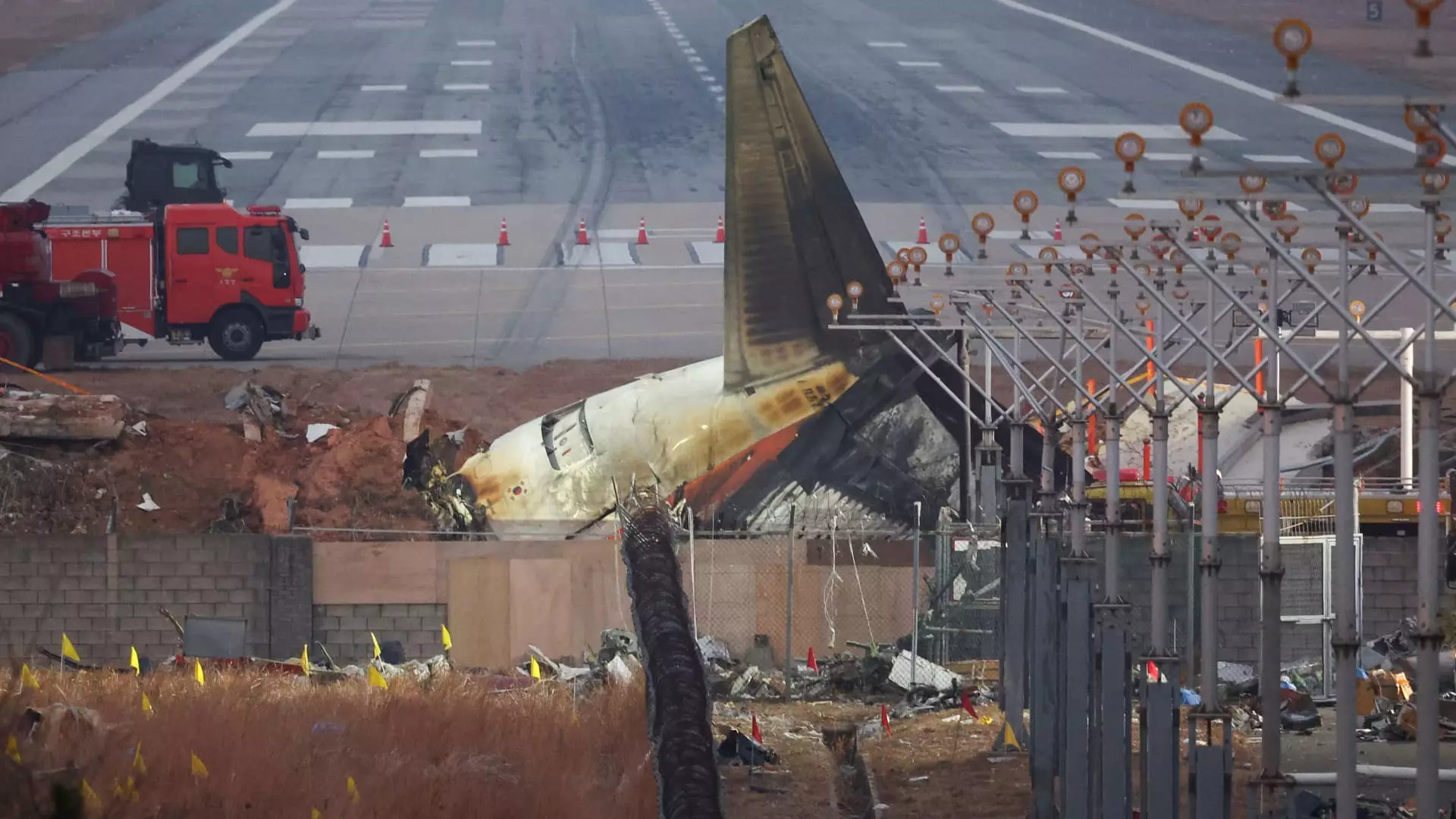The aviation industry is known for its meticulous safety protocols, but recent events have shaken confidence in one of its leading players, especially regarding the Boeing 737-800. A tragic accident involving a Jeju Air flight, which occurred over the weekend, resulted in the loss of 179 lives, sparking a wave of concern and scrutiny. Following the crash, which took place during an approach to Muan International Airport, South Korean authorities swiftly ordered a number of emergency measures, placing an intense spotlight on Boeing and its aircraft’s reliability.
Reports indicate that the aircraft had attempted a landing without its landing gear fully deployed, causing it to skid off the runway and collide with a retaining wall, leading to a catastrophic fire. In the wake of the crash, South Korean officials undertook an immediate review of safety procedures within the aviation sector, focusing particularly on the Boeing 737-800 model—one of the most widespread commercial jets in the world, with thousands still in operation across various airlines.
Government Response and Investigative Efforts
In response to the disaster, South Korea’s Acting President, Choi Sang-mok, directed the Ministry of Land, Infrastructure, and Transport (MOLIT) to initiate thorough inspections of all 737-800 aircraft used by domestic airlines. This proactive step emphasizes the seriousness of the situation and the government’s commitment to ensuring passenger safety. The MOLIT has confirmed a “comprehensive special inspection” will be launched, assessing various aspects of aircraft operation, which will include reviewing the maintenance records of Jeju Air’s fleet.
As part of the investigation into the crash, the U.S. National Transportation Safety Board (NTSB) has sent a team of investigators—including members from the Federal Aviation Administration (FAA) and Boeing itself—to assist in piecing together the events leading to the accident. Two black boxes were recovered from the wreckage; these crucial data recorders are expected to yield vital insights into what transpired during the ill-fated flight.
While the investigation remains ongoing, preliminary reports indicated that the aircraft’s pilot had reported a “bird strike” shortly before the accident, coinciding with a warning issued from the control tower regarding animal activity in the vicinity. Such strikes have been implicated in previous aviation incidents, prompting experts to speculate about their potential impact on the crash. Aviation authorities stated that further investigation into the conditions surrounding the bird strike will be essential, as will examining the retaining wall the aircraft struck.
Despite initial assumptions regarding the cause of the mishap, experts have expressed skepticism about the possibility of a design flaw contributing to the incident. The Boeing 737-800 has been in operation for nearly three decades and boasts an impressive safety record, which has made it a staple in many commercial fleets. Approximately 4,400 of these aircraft are currently in service globally.
Paul Charles, a noted travel analyst, underscored the significance of examining maintenance records to target any discrepancies that may have resulted in a failure to deploy the landing gear—a critical component of safe landings. Continued scrutiny will focus on Jeju Air’s operational protocols to unveil whether neglected maintenance practices may have played a role, particularly given recent flight issues experienced by another aircraft of the same model.
In light of the crash and the resulting investigations, Boeing shares plummeted by more than 2% on Monday. This downturn follows the company’s struggling recovery from the 737 Max crisis, underscoring the fragility of investor confidence in the manufacturer. Jeju Air’s stock also suffered significant losses, with shares dropping over 8% amidst growing public scrutiny and criticisms about safety measures.
Boeing has issued a statement expressing its commitment to support Jeju Air throughout the investigative process, extending condolences to the families of victims involved in the crash. This proactive public relations effort aims to mitigate reputational damage while affirming the company’s responsibility to ensure ultimate passenger safety in operations that utilize its aircraft.
Looking Forward: Addressing Safety Protocols and Recovery
As the investigation inches forward, regulatory bodies and aviation stakeholders are poised to address the findings and implement corrective measures to enhance air travel safety. Emphasis on rigorous maintenance checks and adherence to safety protocols can not only rebuild public confidence but also ensure the integrity of aircraft operations.
This incident serves as a somber reminder of the inherent risks in aviation and highlights the vital importance of stringent oversight and systemic diligence to safeguard against future tragedies. The aviation industry must rally in its commitment to learn from such incidents, scrutinizing protocols and actively working to make flying safer for all.

